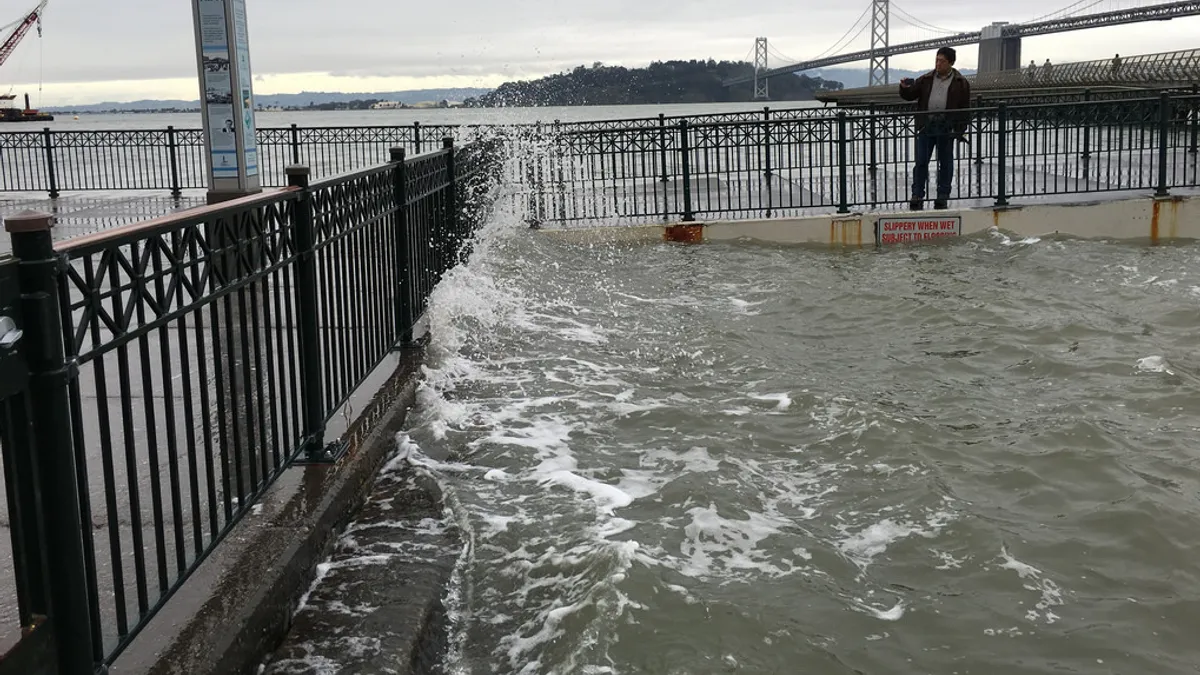Dive Brief:
- Leaders at the San Francisco Public Utilities Commission (SFPUC) and various other agencies outlined a comprehensive flood resilience strategy this week, dubbed RainReadySF, to prepare Bay Area residents and businesses for the upcoming rainy season.
- The strategy details planned infrastructure investments, such as a $700M proposal for flood work to be included in the Sewer System Improvement Program over the next 15 years; coordinated city services like clearing pipes and providing free sandbags; and programs to reduce flood risk like flood insurance or "adopt-a-drain," which provides residents training to keep storm drains clear of debris.
- SFPUC is also considering requiring neighborhoods to develop better flood maps, new construction standards in flood areas, and flood-protection requirements for property sales and renovations.
Dive Insight:
This RainReadySF announcement comes on the heels of a separate SFPUC approval of a $2M funding increase to reimburse property owners who make improvements, such as doorway seals or plumbing upgrades, to their homes. For years, SFPUC has provided these grants, which is appropriate considering San Francisco's notoriety.
The Bay Area has a reputation as a region where shoreline communities are burdened with extreme floods, and that flooding is expected to get exponentially worse in the coming decades. A study released earlier this year predicts that by 2060, many Bay Area communities would face extreme flooding every other week, and by 2100, that chronic flooding could affect public infrastructure like airports and bridges.
In the face of rising global temperatures, many other cities are experiencing extreme flooding — which may no longer be categorized as "extreme" in years to come, but instead, normal. When Hurricane Harvey hit Southeast Texas in August, some media and officials were calling it a "500-year flood," one so catastrophic that it only happens every 500 years. Yet, not even three weeks later, Hurricane Irma slammed the Caribbean and Florida with another devastating storm. Later that month, Hurricane Maria ripped through Puerto Rico, leaving the island in an "apocalyptic" state — six weeks later, 70% of the island remains without power.
If the "500-year storm" is becoming a more common occurrence — as history suggests — then it may be time for more cities to follow San Francisco's lead and implement resiliency strategies before it's too late. A number of methods have been touted to make a city more resilient while lowering recovery costs — enacting regulations, upgrading sewers and drains, installing pervious concrete or rain gardens — yet it is up to city officials to make flood resilience a priority in budgeting and planning.












